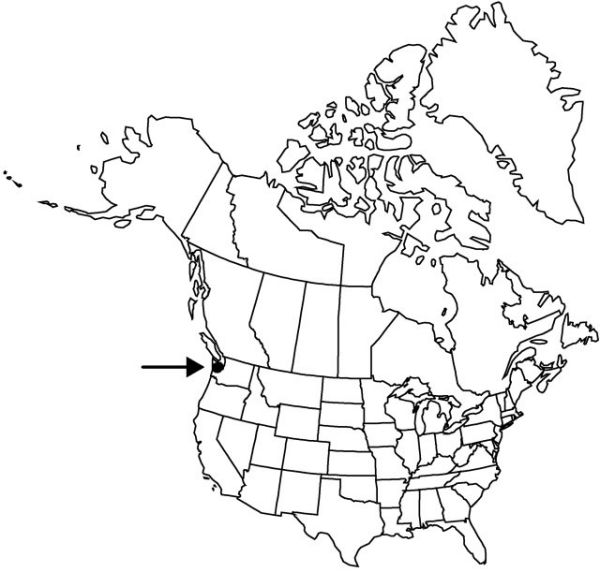Erythronium quinaultense
Syst. Bot. 26: 269, fig. 3. 2001.
Bulbs narrowly ovoid, 35–75 mm. Leaves 12–20 cm; blade green or faintly mottled with white or brown, lanceolate to ovate, margins ± wavy. Scape 12–25 cm. Inflorescences 1–3-flowered. Flowers: tepals white proximally, shading to pink at outer margins, darkest toward tips, with yellow band at base, lanceolate to narrowly ovate, 30–50 mm, inner with small auricles at base; stamens 12–24 mm; filaments white, flattened, slightly widened, linear to lanceolate, 1–2 mm wide; anthers yellow; style white, 10–18 mm; stigma with slender, usually recurved lobes 1–5 mm. Capsules oblong to obovoid, 3–6 cm. 2n = 48.
Phenology: Flowering late spring (May).
Habitat: Openings and rocky ledges in coniferous forests
Elevation: 500–900 m
Discussion
Erythronium quinaultense is a tetraploid species apparently derived from hybridization between E. montanum and E. revolutum. It is known only from the southwestern Olympic Peninsula.
Selected References
None.
